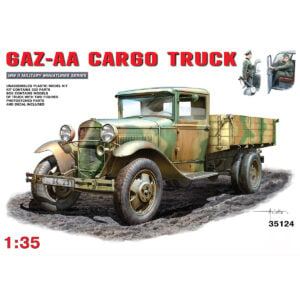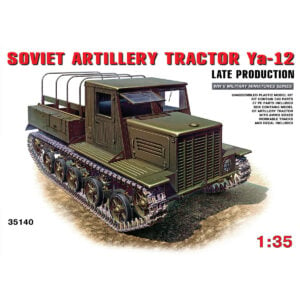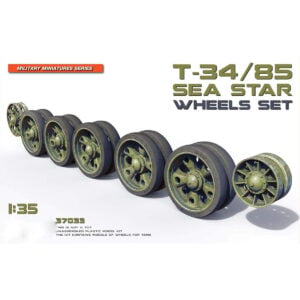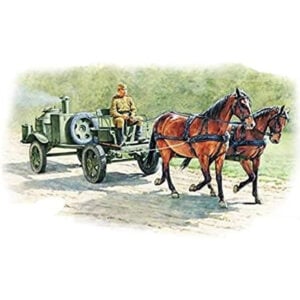Miniart Panzer Crew 1943-1945 1/35 Scale 35465
$19.99
Out of stock
Email when stock available
Description
Box contains
Models of 4 figures
The first tanks in the German army appeared at the end of World War I – these were the A7V machines. After the signing of the Treaty of Versailles, the German armed forces were forbidden to develop armored weapons, but the German side did not honor these restrictions and secretly developed armored weapons. However, after Adolf Hitler came to power in 1933, this development became fully official, and in 1935 the 1st Armored Division was formed. In the period 1935-1939, further divisions were formed, and their main equipment was the Pz.Kpfw cars: I, II, III and IV. A single armored division at that time was composed of a tank brigade divided into two armored regiments, a motorized infantry brigade and support units, among others: reconnaissance, artillery, anti-aircraft and sappers. It consisted of about 300 tanks in full time. It is also worth adding that the German armored forces (German: Panzerwaffe) were trained and prepared to implement the doctrine of lightning war, and not – as in many armies of the time – to support infantry activities. Therefore, emphasis was put in training “pancerniaków” on the interchangeability of functions, independence in decision-making by officers and non-commissioned officers and the best technical mastery of the tanks owned. All this resulted in great successes of German armored weapons in Poland in 1939, but especially in Western Europe in 1940. Also in the course of the fighting in North Africa – especially in the period 1941-1942 – the German armored forces turned out to be a very difficult opponent. Before the invasion of the USSR, the number of German armored divisions almost doubled, but the number of tanks in these units decreased to about 150-200 vehicles. Also in the course of the fighting on the Eastern Front – especially in 1941-1942 – the German armored forces were superior in training and organization to their Soviet opponent. However, contact with such vehicles as the T-34 or KW-1 forced the introduction of the Pz.Kpfw V and VI tanks to the line in 1942 and 1943. Growing losses on the Eastern Front, as well as lost battles – at Stalingrad or Kursk – made the German Panzerwaffe weaken. Its structure included heavy tank battalions (with 3 tank companies), and in 1943, armored grenadier divisions were established. There was also an increasingly clear advantage of the Soviet side, and from 1944 – the need to simultaneously fight the Soviet troops in the east and the Allies in the west. It is also assumed that it was then (in the years 1944-1945) that the training of the German armored forces was weaker than in the previous period and did not constitute such a significant advantage on the German side than before. The last large-scale operations of the German Panzerwaffe were the offensives in the Ardennes (1944-1945) and in Hungary (1945).
Assembly and painting required. Kit does not include model cement glue, paint, and tools. Adult supervision where required.
Contents subject to change.
pretty good figures for plastic, should paint up nicely
Related products
-
Miniart GAZ-AA Cargo Truck 1/35 Scale 35124
$53.49 Add to cart -
Miniart YA-12 Late Prodruction Soviet Artillery Tractor 1/35 Scale 35140
$63.99 Sold Out - More Info -
Miniart T-34/85 Sea Star Wheel Set 1/35 Scale 37033
$17.49 Add to cart -
Miniart Horses Drawn Field Kitchen KP-52 1/35 Scale 35057
$50.99 Add to cart








